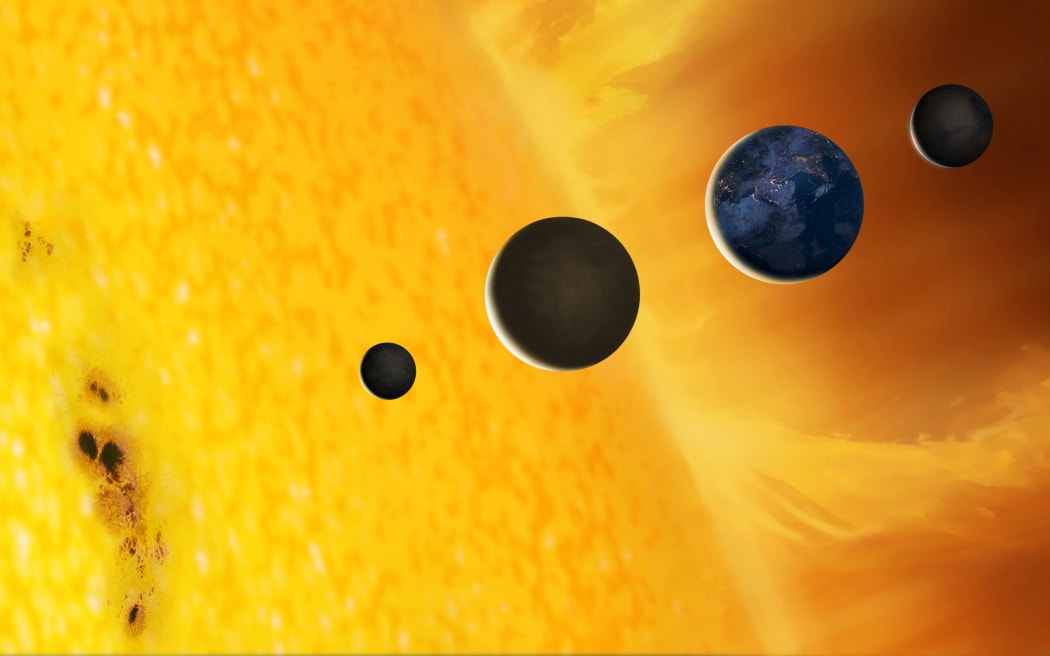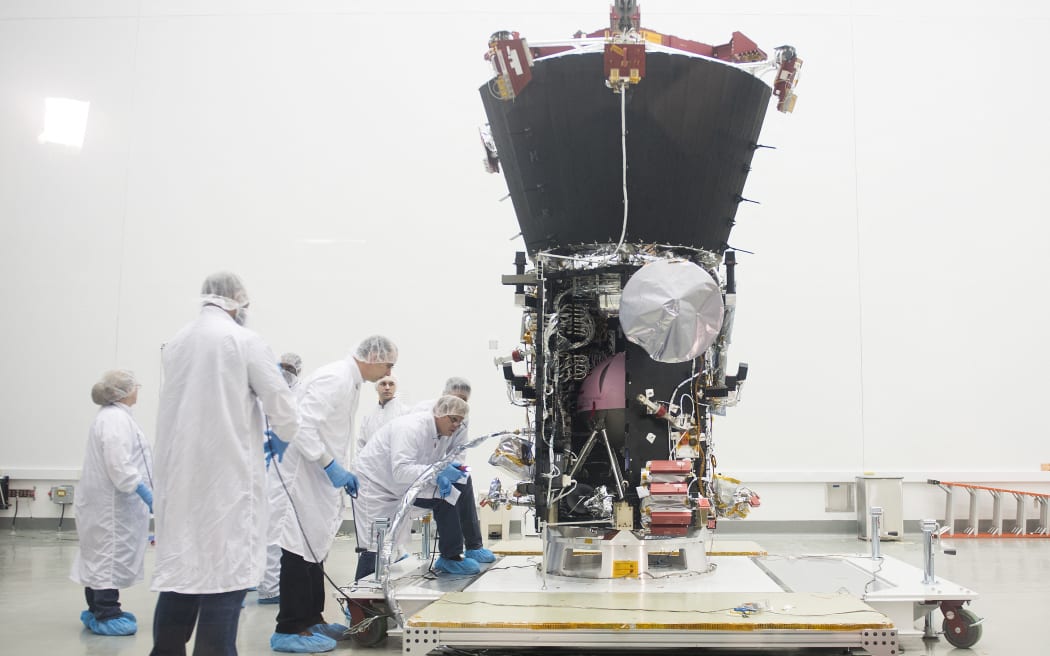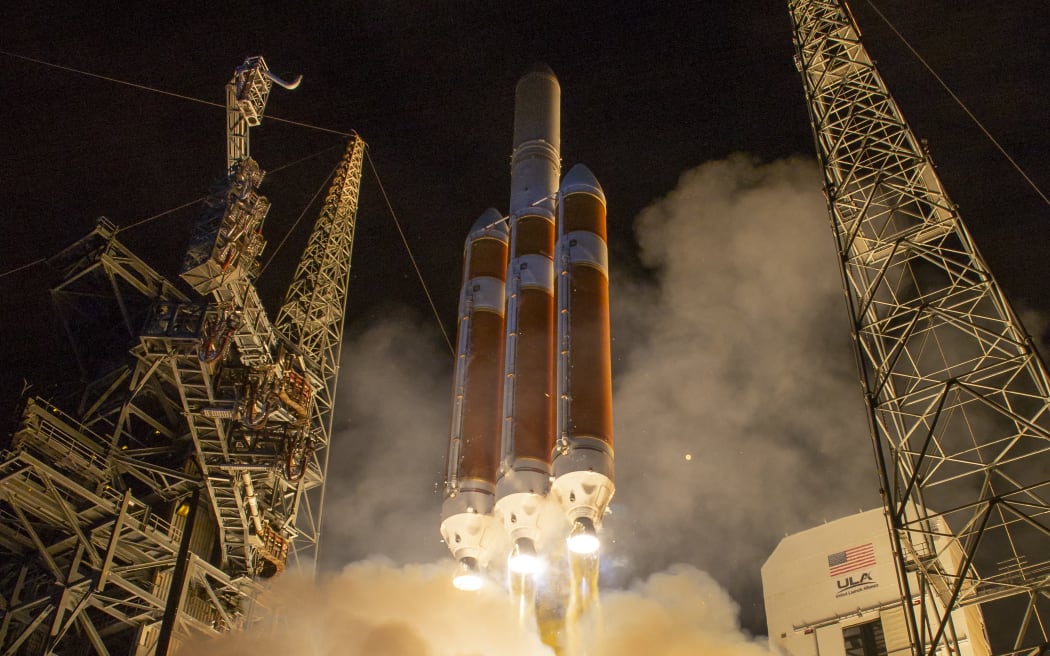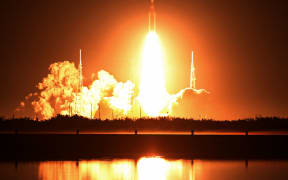
This illustration shows the Sun in comparison to the inner planets Mercury, Venus, Earth and Mars. Photo: MARK GARLICK/ SCIENCE PHOTO LIBRA / AFP
By Jonathan Amos, BBC Science Correspondent
It promises to be a remarkable moment in the history of space exploration.
A year from now, on 24 December, Nasa's Parker Solar Probe will race past the Sun at the astonishing speed of 195 km/s, or 435,000 mph.
No human-made object will have moved so fast nor, indeed, got so close to our star - just 6.1 million km from the Sun's "surface".
"We are basically almost landing on a star," said Parker project scientist Dr Nour Raouafi.
"This will be a monumental achievement for all humanity. This is equivalent to the Moon landing of 1969," the Johns Hopkins University Applied Physics Laboratory scientist told BBC News.
Parker's speed will come from the immense gravitational pull it feels as it falls towards the Sun. It will be akin to flying from New York to London in under 30 seconds.
The US space agency's Parker Solar Probe is one of the most audacious missions ever conceived.
Launched in 2018, it has the goal of making repeated, and ever closer, passes of the Sun.
The late 2024 manoeuvre will take Parker to just 4 percent of the Sun-Earth distance (149 million km/93 million miles).
The challenge Parker faces in doing this will be huge. At perihelion, the point in the probe's orbit nearest the the star, the temperature on the front of the spacecraft will probably reach 1400C.

Engineers examine the Parker Solar Probe before its launch during a media preview at NASA Goddard Space Flight Center in Greenbelt, Maryland, on 28 March 2018. Photo: JIM WATSON / AFP
Parker's strategy is to get in quick and get out quick, making measurements of the solar environment with a suite of instruments deployed from behind a thick heat shield.
The reward, researchers hope, will be breakthrough knowledge on some key solar processes.
Chief among these is a clearer explanation of the workings of the corona, the Sun's outer atmosphere.
It experiences what seems to be counter-intuitive superheating. The temperature of the Sun at its photosphere, the surface, is roughly 6000C but within the corona it can reach a staggering million degrees and more.
You'd think temperature would decrease with distance from the star's nuclear core.
It's also within the corona region that the outward flow of charged particles - electrons, protons and heavy ions - suddenly gets accelerated into a supersonic wind moving at 400 km/s, or 1,000,000 mph.
Scientists still can't fully explain this either. But it's critical to improving forecasts of solar behaviour and the phenomenon of "space weather".
The latter refers to the powerful eruptions of particles and magnetic fields from the Sun that can degrade communications on Earth and even knock over power grids. The radiation also poses health risks to astronauts.
"This takes on a new dimension, especially now that we're thinking of sending women and men back to the Moon and even setting up a permanent presence on the lunar surface," Dr Raouafi said.
Parker made one of its close approaches to the Sun on Friday. It has three more planned in 2024 before it then swings around Venus on 6 November to help bend its orbit and make 24 December a historic occasion.

This handout photograph courtesy of NASA shows the United Launch Alliance Delta IV Heavy rocket launching NASA's Parker Solar Probe to touch the Sun, 12 August 2018. Photo: BILL INGALLS / AFP
The head of science at Nasa is Dr Nicky Fox. She was the lead scientist on Parker before taking up her current role.
She said the major plus of the 24 December flyby would be the length of time the probe got to sit in the corona, far longer than on any previous pass.
"We don't know what we'll find, but we'll be looking for waves in the solar wind associated with the heating," she told BBC News.
"I suspect we'll sense lots of different types of waves which would point to a mix of processes that people have been arguing over for years."
The coming year will be the apex of Parker's mission; it won't be able to get any closer to the Sun beyond December, not least because its orbit will no longer afford swingbys of Venus to train its trajectory onto an even tighter path.
But to go any closer would also risk shortening the shadow cast by Parker's big shield, exposing the rear of the spacecraft to intolerable temperatures.
* This story was first published by the BBC.




